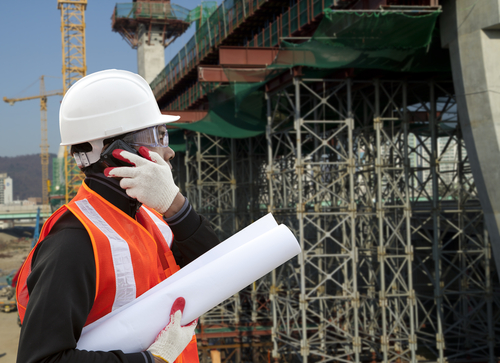
Infrastructure funding is critical to getting America’s economic gears moving again, especially at the local level, argue stakeholders who seek to shape the next COVID-19 recovery package.
“In today’s environment if we get this right, then we align federal and local interests around infrastructure,” said Rick Jacobs, CEO and co-founder of Accelerator for America, a nonprofit transit, infrastructure and economic development group that develops solutions for economic insecurity. “The local folks on the ground tend to know the very best about what jobs and careers are needed as soon as it’s possible after the all-clear is given.”
Jacobs said he’s working with several groups putting together a ‘playbook’ for the federal government to get a lot of infrastructure built quickly. Accelerator for America has worked with The U.S. Conference of Mayors, WSP USA, the ACEC Research Institute, and other groups to help shape whatever the upcoming stimulus package will look like when it hits President Donald Trump’s desk.
President Trump wanted a $2 trillion infrastructure package to put Americans back to work post-pandemic. The money would come at a zero-interest rate, he has said. The White House has been talking with Democrats and Republicans about how to best make it happen, but so far there has been no deal.
Some argue that should the money be doled out from the federal government, local governments could put it to use best.
“There’s a common misconception that policy is made at the federal level and then it trickles down to the local level where it’s implemented,” said John Porcari, president of Advisory Services for WSP USA, an engineering consulting firm, and former U.S. Deputy Secretary of Transportation during the Obama Administration. “The real innovations are at the local level and they bubble up. We have to use that to drive changes at the federal level.”
Porcari argues there must be an overhaul as to how infrastructure projects are funded and move to a system that incentivizes local, state and federal investment.
“I’m confident there will be an infrastructure package as part of the national recovery effort,” said Porcari. “We have to make it as effective as possible by focusing on the local employment.”
For every $1 billion in highway infrastructure spent, 13,000 jobs are created, according to The Brookings Institute. And nearly 64 percent of those jobs are concentrated in the 100 largest metro areas. The Bureau of Labor Statistics found in 2017 that infrastructure jobs pay an average of $37,690. It also found infrastructure jobs will grow exponentially well into 2026.
Porcari said he thinks of the stimulus package as triage. “What Congress has done already is to stop the bleeding of small and medium-sized businesses. But what it doesn’t do is get us to the recovery phase. If you want to get us to the recovery phase, it has to be built on a solid foundation. Infrastructure is that solid foundation investment.”
That’s as basic as street projects, stormwater upgrades, or bringing broadband to underserved areas.
“All of the big infrastructure projects,” said Porcari, “we built by our parents and our grandparents. This is about lasting recovery. These are jobs you can’t export.”
After President Trump was elected, he had hoped to strike a deal with members of Congress on a large infrastructure package, an investment that appealed to many Democrats. So far, that hasn’t happened. One concern from Senate Majority Leader Mitch McConnell (R-KY) has been over how to pay for it. Regarding the next coronavirus relief bill, McConnell recently noted that he sees infrastructure as unrelated to the current pandemic, although pushing forward on a separate infrastructure bill is a possibility.
“Recovery will happen,” added Jacobs. “There’s at least a $2 trillion deficit of stuff that has to be built. It’s just a question of when.”